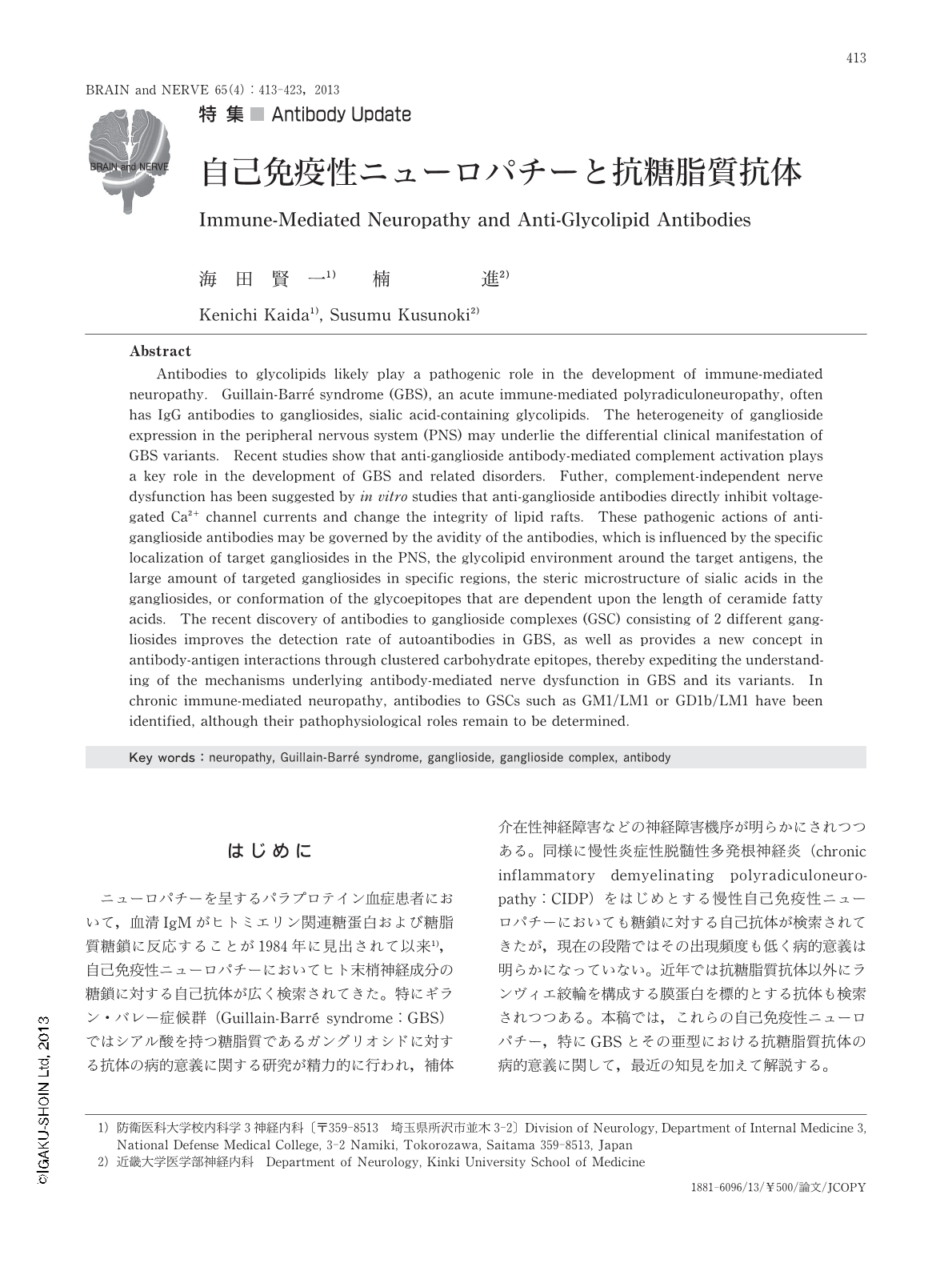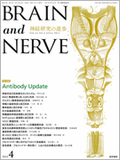Japanese
English
- 有料閲覧
- Abstract 文献概要
- 1ページ目 Look Inside
- 参考文献 Reference
はじめに
ニューロパチーを呈するパラプロテイン血症患者において,血清IgMがヒトミエリン関連糖蛋白および糖脂質糖鎖に反応することが1984年に見出されて以来1),自己免疫性ニューロパチーにおいてヒト末梢神経成分の糖鎖に対する自己抗体が広く検索されてきた。特にギラン・バレー症候群(Guillain-Barré syndrome:GBS)ではシアル酸を持つ糖脂質であるガングリオシドに対する抗体の病的意義に関する研究が精力的に行われ,補体介在性神経障害などの神経障害機序が明らかにされつつある。同様に慢性炎症性脱髄性多発根神経炎(chronic inflammatory demyelinating polyradiculoneuropathy:CIDP)をはじめとする慢性自己免疫性ニューロパチーにおいても糖鎖に対する自己抗体が検索されてきたが,現在の段階ではその出現頻度も低く病的意義は明らかになっていない。近年では抗糖脂質抗体以外にランヴィエ絞輪を構成する膜蛋白を標的とする抗体も検索されつつある。本稿では,これらの自己免疫性ニューロパチー,特にGBSとその亜型における抗糖脂質抗体の病的意義に関して,最近の知見を加えて解説する。
Abstract
Antibodies to glycolipids likely play a pathogenic role in the development of immune-mediated neuropathy. Guillain-Barré syndrome (GBS), an acute immune-mediated polyradiculoneuropathy, often has IgG antibodies to gangliosides, sialic acid-containing glycolipids. The heterogeneity of ganglioside expression in the peripheral nervous system (PNS) may underlie the differential clinical manifestation of GBS variants. Recent studies show that anti-ganglioside antibody-mediated complement activation plays a key role in the development of GBS and related disorders. Futher, complement-independent nerve dysfunction has been suggested by in vitro studies that anti-ganglioside antibodies directly inhibit voltage-gated Ca2+ channel currents and change the integrity of lipid rafts. These pathogenic actions of anti-ganglioside antibodies may be governed by the avidity of the antibodies, which is influenced by the specific localization of target gangliosides in the PNS, the glycolipid environment around the target antigens, the large amount of targeted gangliosides in specific regions, the steric microstructure of sialic acids in the gangliosides, or conformation of the glycoepitopes that are dependent upon the length of ceramide fatty acids. The recent discovery of antibodies to ganglioside complexes (GSC) consisting of 2 different gangliosides improves the detection rate of autoantibodies in GBS, as well as provides a new concept in antibody-antigen interactions through clustered carbohydrate epitopes, thereby expediting the understanding of the mechanisms underlying antibody-mediated nerve dysfunction in GBS and its variants. In chronic immune-mediated neuropathy, antibodies to GSCs such as GM1/LM1 or GD1b/LM1 have been identified, although their pathophysiological roles remain to be determined.

Copyright © 2013, Igaku-Shoin Ltd. All rights reserved.


